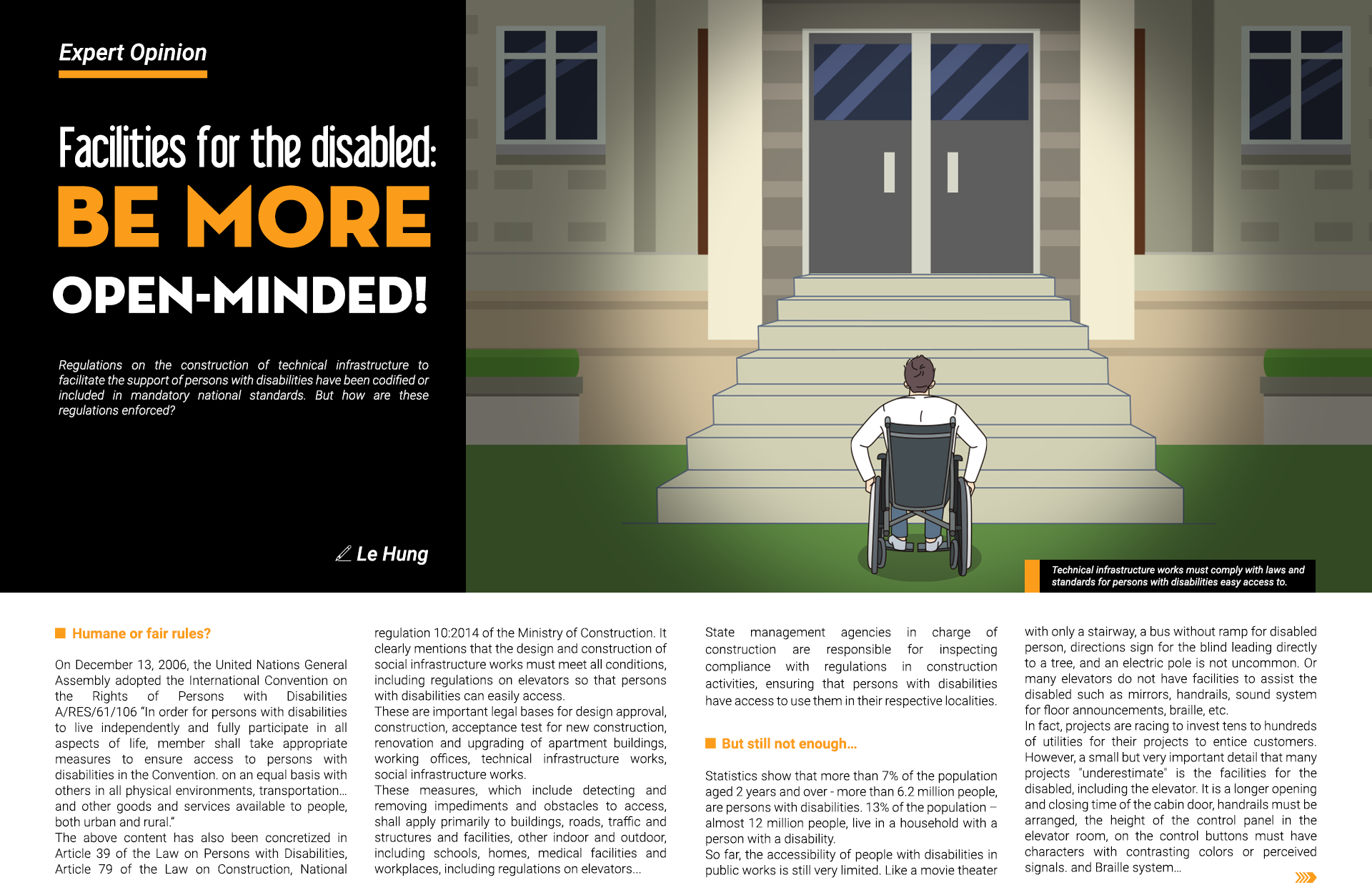
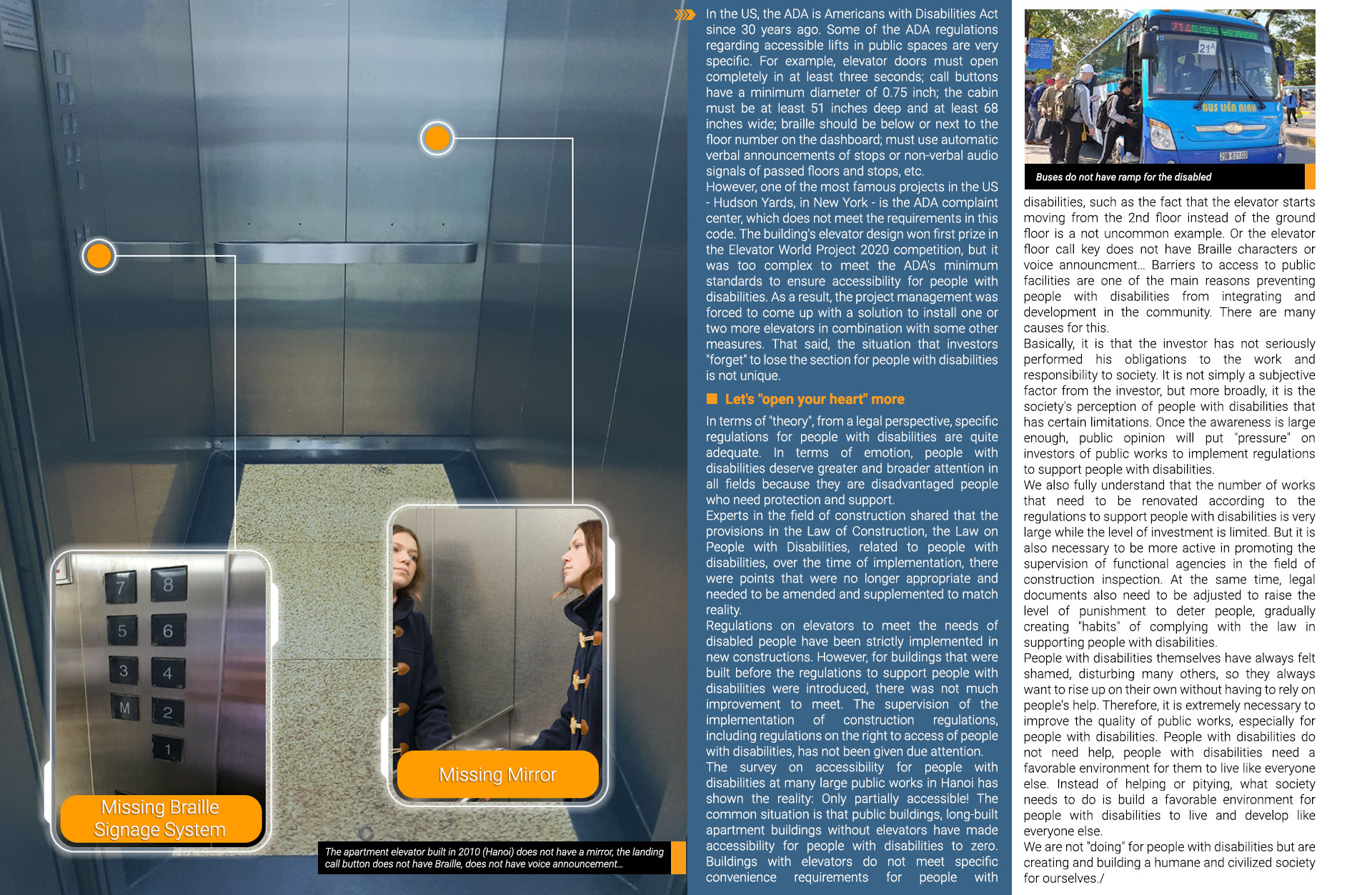
Facilities for the disabled: Be more open-minded!
Regulations on the construction of technical infrastructure to facilitate the support of persons with disabilities have been codified or included in mandatory national standards. But how are these regulations enforced?
Humane or fair rules?
On December 13, 2006, the United Nations General Assembly adopted the International Convention on the Rights of Persons with Disabilities A/RES/61/106 “In order for persons with disabilities to live independently and fully participate in all aspects of life, member shall take appropriate measures to ensure access to persons with disabilities in the Convention. on an equal basis with others in all physical environments, transportation… and other goods and services available to people, both urban and rural.”
The above content has also been concretized in Article 39 of the Law on Persons with Disabilities, Article 79 of the Law on Construction, National regulation 10:2014 of the Ministry of Construction. It clearly mentions that the design and construction of social infrastructure works must meet all conditions, including regulations on elevators so that persons with disabilities can easily access.
These are important legal bases for design approval, construction, acceptance test for new construction, renovation and upgrading of apartment buildings, working offices, technical infrastructure works, social infrastructure works.
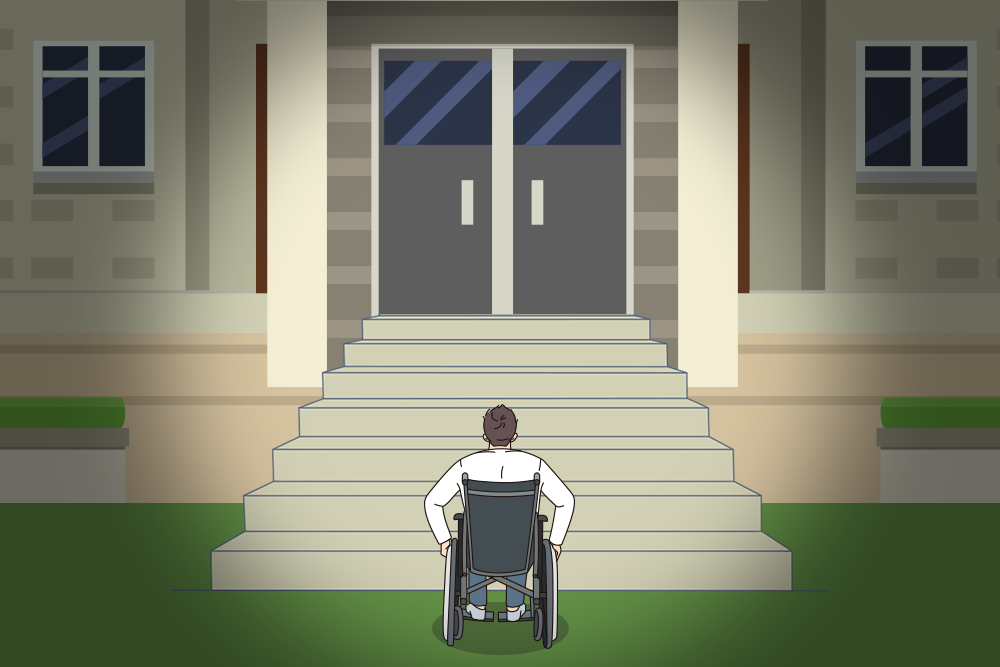
These measures, which include detecting and removing impediments and obstacles to access, shall apply primarily to buildings, roads, traffic and structures and facilities, other indoor and outdoor, including schools, homes, medical facilities and workplaces, including regulations on elevators…
State management agencies in charge of construction are responsible for inspecting compliance with regulations in construction activities, ensuring that persons with disabilities have access to use them in their respective localities.
But still not enough…
Statistics show that more than 7% of the population aged 2 years and over – more than 6.2 million people, are persons with disabilities. 13% of the population – almost 12 million people, live in a household with a person with a disability.
So far, the accessibility of people with disabilities in public works is still very limited. Like a movie theater with only a stairway, a bus without ramp for disabled person, directions sign for the blind leading directly to a tree, and an electric pole is not uncommon. Or many elevators do not have facilities to assist the disabled such as mirrors, handrails, sound system for floor announcements, braille, etc.
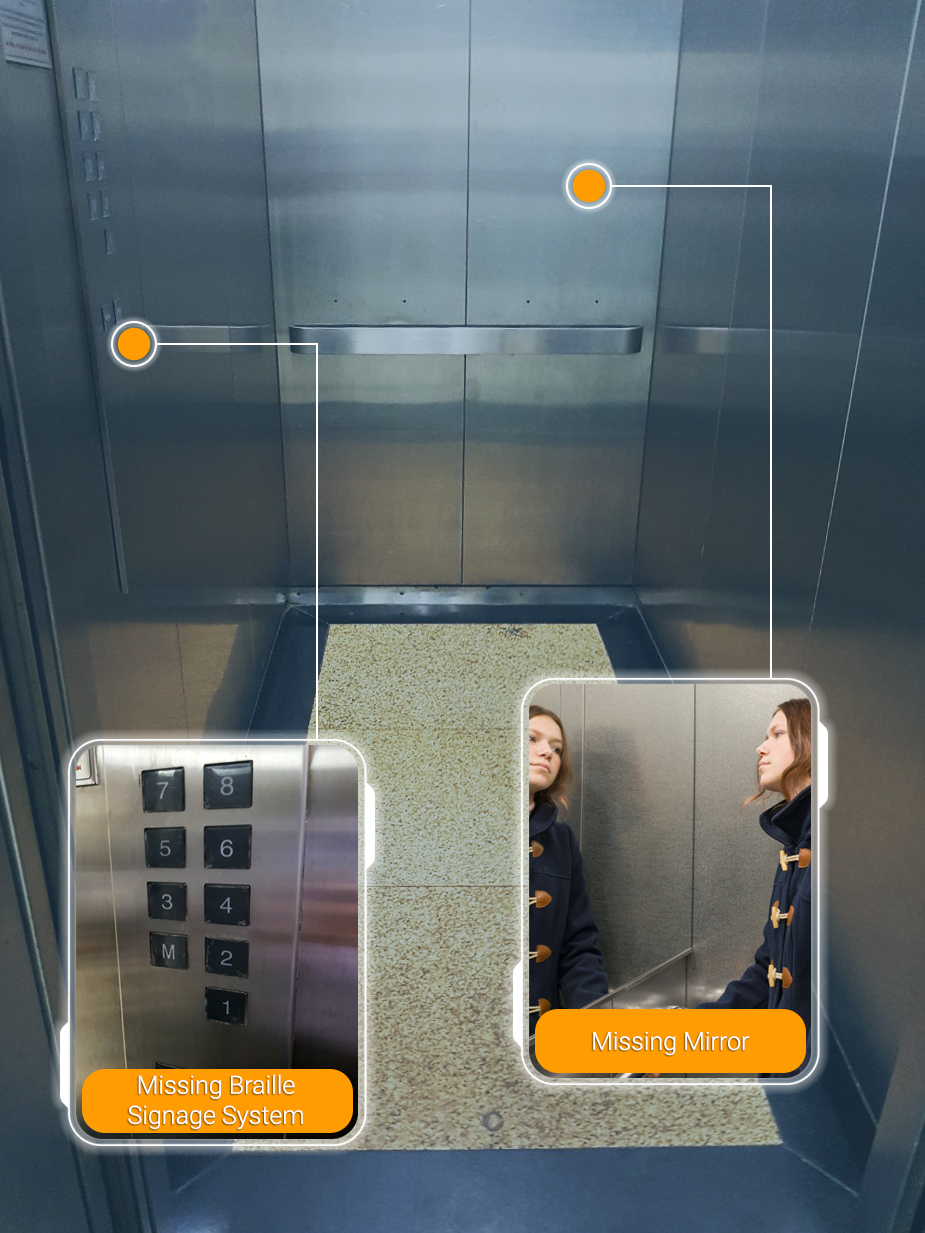
In fact, projects are racing to invest tens to hundreds of utilities for their projects to entice customers. However, a small but very important detail that many projects “underestimate” is the facilities for the disabled, including the elevator. It is a longer opening and closing time of the cabin door, handrails must be arranged, the height of the control panel in the elevator room, on the control buttons must have characters with contrasting colors or perceived signals. and Braille system…
In the US, the ADA is Americans with Disabilities Act since 30 years ago. Some of the ADA regulations regarding accessible lifts in public spaces are very specific. For example, elevator doors must open completely in at least three seconds; call buttons have a minimum diameter of 0.75 inch; the cabin must be at least 51 inches deep and at least 68 inches wide; braille should be below or next to the floor number on the dashboard; must use automatic verbal announcements of stops or non-verbal audio signals of passed floors and stops, etc.
However, one of the most famous projects in the US – Hudson Yards, in New York – is the ADA complaint center, which does not meet the requirements in this code. The building’s elevator design won first prize in the Elevator World Project 2020 competition, but it was too complex to meet the ADA’s minimum standards to ensure accessibility for people with disabilities. As a result, the project management was forced to come up with a solution to install one or two more elevators in combination with some other measures. That said, the situation that investors “forget” to lose the section for people with disabilities is not unique.
Let's "open your heart" more
In terms of “theory”, from a legal perspective, specific regulations for people with disabilities are quite adequate. In terms of emotion, people with disabilities deserve greater and broader attention in all fields because they are disadvantaged people who need protection and support.
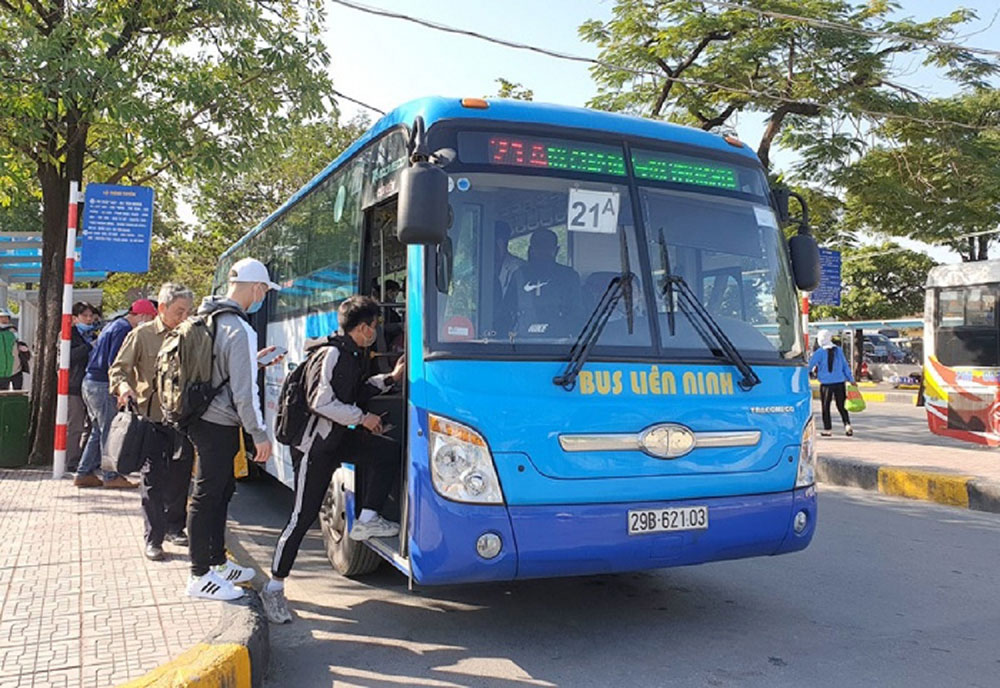
Experts in the field of construction shared that the provisions in the Law of Construction, the Law on People with Disabilities, related to people with disabilities, over the time of implementation, there were points that were no longer appropriate and needed to be amended and supplemented to match reality.
Regulations on elevators to meet the needs of disabled people have been strictly implemented in new constructions. However, for buildings that were built before the regulations to support people with disabilities were introduced, there was not much improvement to meet. The supervision of the implementation of construction regulations, including regulations on the right to access of people with disabilities, has not been given due attention.
The survey on accessibility for people with disabilities at many large public works in Hanoi has shown the reality: Only partially accessible! The common situation is that public buildings, long-built apartment buildings without elevators have made accessibility for people with disabilities to zero. Buildings with elevators do not meet specific convenience requirements for people with disabilities, such as the fact that the elevator starts moving from the 2nd floor instead of the ground floor is a not uncommon example. Or the elevator floor call key does not have Braille characters or voice announcment… Barriers to access to public facilities are one of the main reasons preventing people with disabilities from integrating and development in the community.
There are many causes for this.
Basically, it is that the investor has not seriously performed his obligations to the work and responsibility to society. It is not simply a subjective factor from the investor, but more broadly, it is the society’s perception of people with disabilities that has certain limitations. Once the awareness is large enough, public opinion will put “pressure” on investors of public works to implement regulations to support people with disabilities.
We also fully understand that the number of works that need to be renovated according to the regulations to support people with disabilities is very large while the level of investment is limited. But it is also necessary to be more active in promoting the supervision of functional agencies in the field of construction inspection. At the same time, legal documents also need to be adjusted to raise the level of punishment to deter people, gradually creating “habits” of complying with the law in supporting people with disabilities.
People with disabilities themselves have always felt shamed, disturbing many others, so they always want to rise up on their own without having to rely on people’s help. Therefore, it is extremely necessary to improve the quality of public works, especially for people with disabilities. People with disabilities do not need help, people with disabilities need a favorable environment for them to live like everyone else. Instead of helping or pitying, what society needs to do is build a favorable environment for people with disabilities to live and develop like everyone else.
We are not “doing” for people with disabilities but are creating and building a humane and civilized society for ourselves./
Lê Hùng